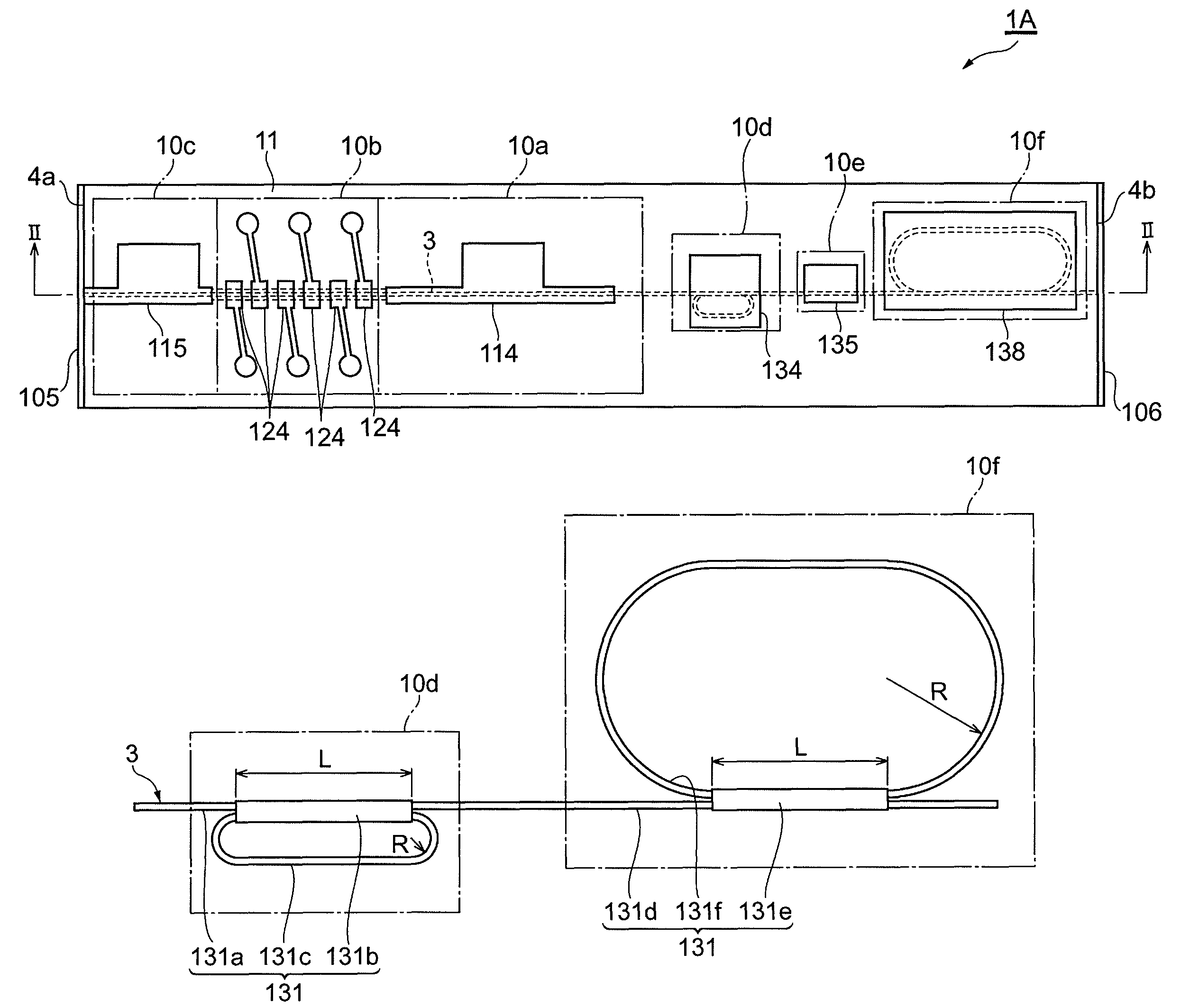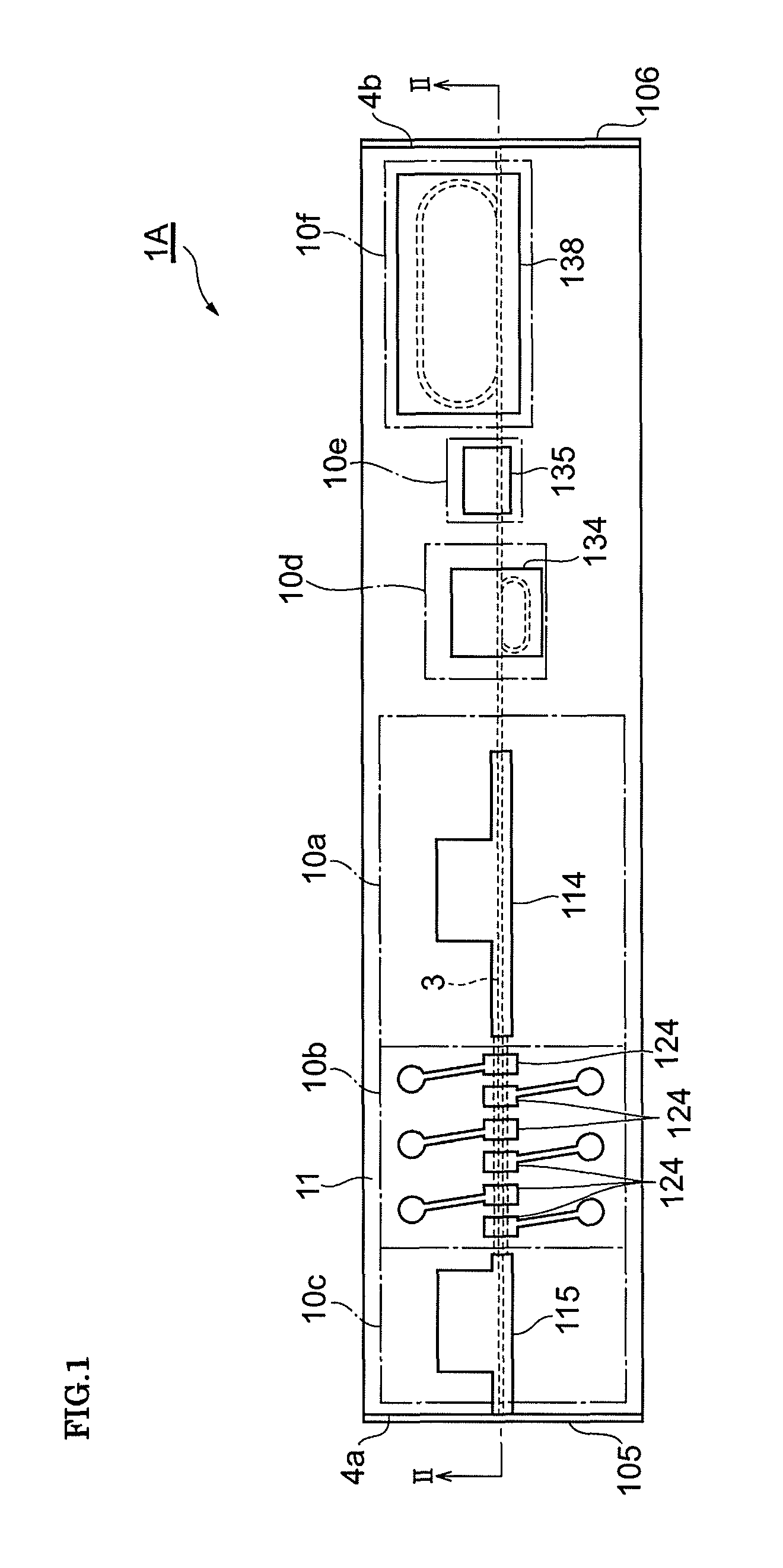Semiconductor laser
a laser and semiconductor technology, applied in the field of semiconductor lasers, can solve the problems of increasing the optical loss etc., and achieve the effects of increasing the optical loss, increasing the bending loss, and decreasing the optical path length of the optical waveguide of the ring resonator with a large fsr
- Summary
- Abstract
- Description
- Claims
- Application Information
AI Technical Summary
Benefits of technology
Problems solved by technology
Method used
Image
Examples
Embodiment Construction
[0039]A semiconductor laser according to an embodiment of the present invention will be described in detail below with reference to the attached drawings. It is to be noted that like reference signs refer like elements when the description is given for the drawings, and redundant description is omitted.
[0040]FIG. 1 is a plan view of a semiconductor laser 1A according to the embodiment of the present invention. FIG. 2 is a cross-sectional view taken along line II-II of the semiconductor laser 1A shown in FIG. 1. The semiconductor laser 1A is a wavelength tunable semiconductor laser.
[0041]Referring to FIGS. 1 and 2, the semiconductor laser 1A includes a gain region 10a, a distributed Bragg reflector (DBR) region 10b, an amplifier region 10c, a first ring resonator region 10d, a phase adjustment region (phase adjustment portion) 10e, and a second ring resonator region 10f. These regions 10a to 10f are formed on a common semiconductor substrate 8 as shown in FIG. 2, and arranged in a pr...
PUM
 Login to View More
Login to View More Abstract
Description
Claims
Application Information
 Login to View More
Login to View More - R&D
- Intellectual Property
- Life Sciences
- Materials
- Tech Scout
- Unparalleled Data Quality
- Higher Quality Content
- 60% Fewer Hallucinations
Browse by: Latest US Patents, China's latest patents, Technical Efficacy Thesaurus, Application Domain, Technology Topic, Popular Technical Reports.
© 2025 PatSnap. All rights reserved.Legal|Privacy policy|Modern Slavery Act Transparency Statement|Sitemap|About US| Contact US: help@patsnap.com



